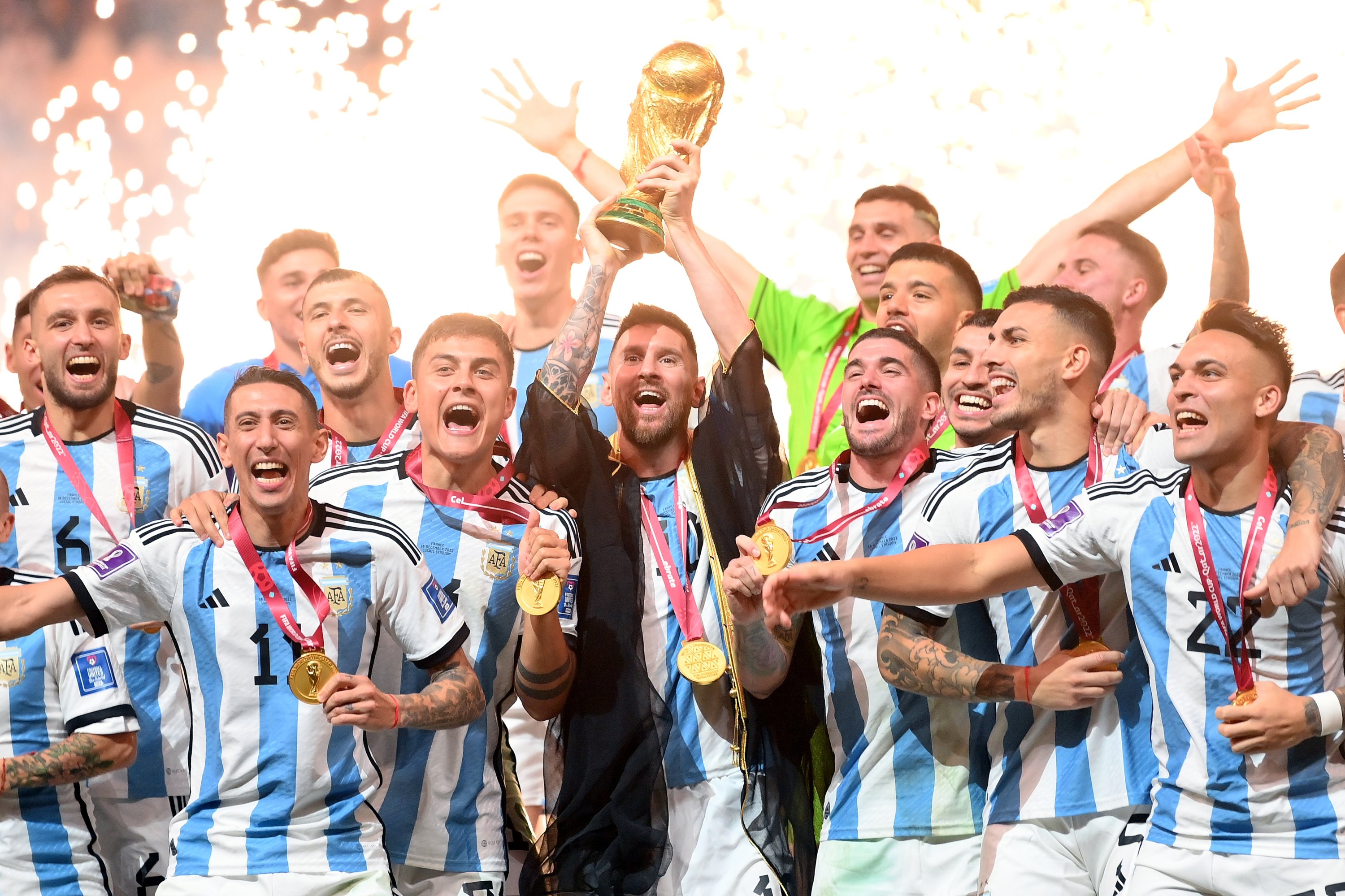© Turkuvaz Haberleşme ve Yayıncılık 2026
In 1930, the footballing world gathered in Uruguay for the inaugural World Cup, a modest affair featuring just 13 teams.
It was a tournament that almost did not happen, with a last-ditch effort to lure European teams and a quirky mishap involving Egypt's ship connection.
This historic event barely made a ripple in global news beyond the shores of South America.
Fast forward to Wednesday, and FIFA unveiled its plans for the 2030 edition, poised to mark a century of World Cup history.
The next iteration will be co-hosted by Uruguay, Argentina, and Paraguay, along with Morocco, Spain, and Portugal.
A stark contrast to the understated 1930 tournament, the 2030 spectacle will captivate billions of viewers worldwide, thanks to technological advancements unimaginable nearly a century ago.
The expansion of the tournament to 48 teams, starting from the 2026 World Cup, will see nearly a quarter of the world's countries vying for glory in 2030.
Unlike the amateur players of 1930, the field will feature some of the planet's highest-paid and most recognizable players.
For today's avid football fans, it is challenging to fathom the 1930 World Cup.
Back then, international football had existed for nearly six decades, yet its reach remained limited, and intercontinental showdowns were a rare occurrence outside the Olympic Games.
There was no elaborate qualification process for the 1930 event; instead, the entire world received an invitation.
Two months before kickoff, not a single European team had accepted the call.
England, having shunned FIFA at the time, deemed such a competition between them and abstained until 1950.
Ultimately, four European teams – Belgium, France, Yugoslavia, and Romania – were convinced to embark on the arduous sea journey.
Siam, known today as Thailand, briefly entered but withdrew and has never returned, much like Japan, which had to wait until 1998 to make its belated World Cup debut.
Africa was supposed to be represented by Egypt, but they missed their connecting ship, leaving an unwieldy 13 teams in the competition.
Despite an unexpectedly competitive group stage, both semifinals in 1930 ended in 6-1 thrashings, as Argentina dispatched the United States and Uruguay hammered Yugoslavia.
The U.S., now one of the hosts for the 2026 tournament alongside Mexico and Canada, played much of their semi-final with just nine men – a stark contrast to today's substitution-rich matches.
In those days, substitutes were nothing more than a distant dream.
In one unforgettable incident, a violent assault on an American player prompted coach Jack Coll to storm onto the pitch to confront the referee.
In a bizarre turn of events, Coll famously tripped and accidentally shattered a bottle of chloroform.
Overcome by the fumes, he was stretchered off alongside his injured player.
In the final, Uruguay, the winners of the previous two Olympic football titles (which unofficially bestowed them with the title of world champions), triumphed over their fierce Argentine rivals with a score of 4-2.

The historic Estadio Centenario in Montevideo, where that final took place, will once again be a stage for the 2030 World Cup.
Uruguay would go on to secure another World Cup title in 1950 and has continued to punch above its weight in football ever since.
Argentina, in the decades that followed, established themselves as a footballing superpower with victories in 1978, 1986 and most recently in 2022.

However, the decision to grant a match to Paraguay, a team that reached the quarterfinals only once in the first tournament, and the rationale behind their automatic qualification, as per their federation president, remains a question mark that FIFA has yet to clarify.
